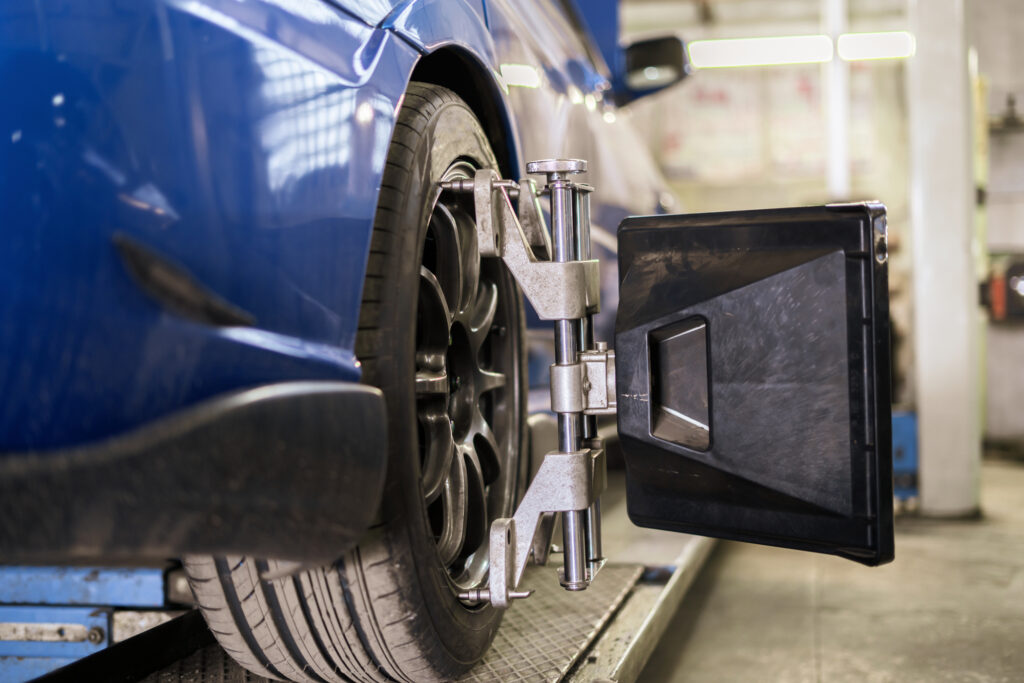After an impact or collision, your vehicle’s wheel alignment might be the last thing on your mind, but it’s crucial for your car’s performance and safety. Whether you’ve just bumped into a curb or had a more serious collision, proper wheel alignment can make all the difference. Misalignment not only affects your car’s handling and tire longevity but also impacts your overall driving experience. This blog will dive into why addressing wheel alignment after an accident is essential, how to identify signs of misalignment, and the steps to ensure your vehicle is back to its best.
What is Wheel Alignment?
Wheel alignment involves adjusting the angles of the wheels to the car manufacturer’s specifications. The key components of wheel alignment include camber, caster, and toe. Camber is the angle of the wheels in relation to the ground when viewed from the front or back of the car. Caster is the angle of the steering pivot when viewed from the side of the vehicle. Toe refers to the direction the tires point relative to the centerline of the vehicle. Proper alignment ensures these angles are correctly adjusted to enhance vehicle performance.
Why is Proper Alignment Important?
Proper wheel alignment is crucial for vehicle handling and tire longevity. Misalignment can cause the car to pull to one side, making it difficult to steer straight. It also leads to uneven tire wear and reduces tire lifespan, which can potentially cause blowouts. A well-aligned vehicle offers better fuel efficiency and a smoother ride to ensure safety and comfort.
Signs of Misalignment After an Impact
Here’s a list of signs of misalignment after an accident:
- Uneven Tire Wear: Tires show irregular or rapid wear patterns.
- Steering Wheel Off-Center: The steering wheel is not centered when driving straight.
- Vehicle Pulling to One Side: The car drifts or pulls to the left or right while driving on a straight, level road.
- Vibration or Shaking: The steering wheel or car vibrates while driving, especially at higher speeds.
- Noisy Steering: Unusual noises, such as squealing or clunking, when turning the steering wheel.
- Difficulty Steering: Increased effort is required to steer, or the steering feels loose or unresponsive.
- Wandering: The vehicle tends to wander or feel unstable on the road.
- Poor Handling: The car feels unstable, especially when turning corners or driving on uneven surfaces.
If you notice any of these signs after an accident, it’s important to have your vehicle inspected to ensure proper alignment and safe driving conditions.
Immediate Steps to Take After a Collision
Here are some of the first steps you should take after a collision:
- Ensure Safety First: Move to a safe location away from traffic if possible and turn on hazard lights to alert other drivers.
- Visual Inspection: Check for obvious damage to the wheels, tires, and suspension components. Look for any visible signs of misalignment or bent parts.
- Check Tire Condition: Inspect tires for cuts, bulges, or uneven wear patterns, and ensure that all tires are properly inflated.
- Assess Driveability: Carefully test if the vehicle can be driven safely and not any immediate issues, such as pulling to one side, unusual noises, or difficulty steering.
- Document the Damage: Take photos of any visible damage to the vehicle, and note any signs of misalignment or other issues you observe.
- Contact Your Insurance Company: Report the accident and provide details of the damage and follow their instructions for the next steps and potential inspection.
- Schedule a Professional Inspection: Arrange for a qualified mechanic to perform a thorough inspection of the alignment and suspension.
The Wheel Alignment Process
The wheel alignment process begins with a thorough initial inspection and diagnosis. Technicians use specialized alignment tools and technology to take precise measurements of the alignment angles. This step ensures an accurate assessment of the vehicle’s current alignment state.
Once the diagnosis is complete, the technician proceeds to adjust the alignment angles of the camber, caster, and toe components. These adjustments are made with precision to meet the manufacturer’s specifications.
After making the necessary adjustments, it’s crucial to ensure all components are functioning properly. The technician will perform a test drive to confirm the alignment accuracy and check for any residual issues. This step verifies that the adjustments have been successful and the vehicle handles correctly on the road.
Choose Ray’s Muffler for Alignment Issues
Ray’s Muffler specializes in addressing alignment problems that often arise after an auto accident to ensure your vehicle returns to optimal performance and safety. With our experienced technicians and state-of-the-art diagnostic tools, we provide precise assessments and adjustments for alignment issues. We also offer other auto repair services to restore your vehicle’s functions in a short amount of time. Contact us today to learn more about our services and get your inspection scheduled.





